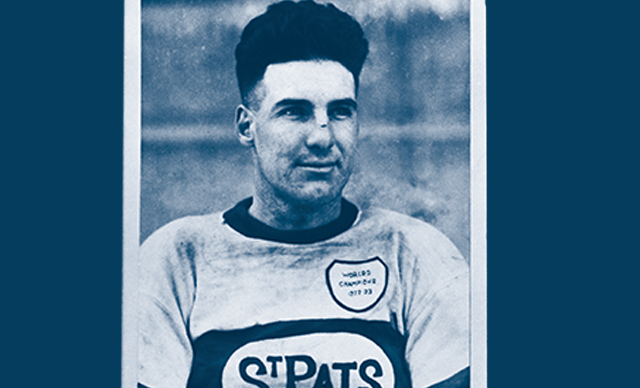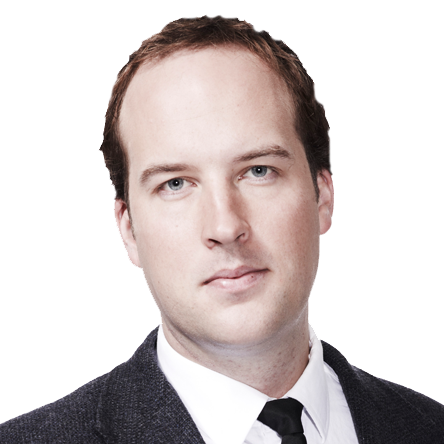Each day from now until the Winter Classic, Sportsnet will count down the greatest Toronto Maple Leafs of all time.
There’s an old story that can still be heard circulating the corridors of Ontario nursing homes, retold by nonagenarians and centenarians about the time some eagle-eyed kid with a pompadour took to a frozen rink and scored 12 goals without ever crossing centre ice.
They call it the legend of Cecil “Babe” Dye. No one can say when or where it actually happened. All they know is, had you been fortunate enough to have seen him play, you’d never question its veracity. Because old Dye sure could shoot. And had he just learned to skate better, he might have gone down as one of the greatest hockey players ever. Such was the only real shortcoming of the first man to lead the Toronto St. Pats/Maple Leafs to the Stanley Cup.
Born in Hamilton in 1898 and raised in Toronto, he played professional hockey in both cities, as well as New York and Chicago, where he eventually died an old man of 64. Short and slight compared to modern players (he was five-foot-eight and 150 lb.), his greatest virtue was his shot, which was more powerful and accurate than any player before. His lopsided style of play is reflected in his career stats: 201 goals and 47 assists.
A gifted athlete in multiple sports, he also played halfback with the Toronto Argonauts for a season, and he earned the nickname “Babe” for his proficiency with a baseball bat. He was a star outfielder with the Toronto Maple Leafs baseball club before he became a hockey star. He was so good, in fact, that Connie Mack, manager of the Philadelphia Athletics, offered him $25,000 to join the A’s in 1921. But he chose to stick with hockey instead.
A member of the St. Pats from the day they joined the NHL in 1919, Dye electrified fans in the old Arena Gardens, where his shooting prowess twice earned him the NHL scoring title. Notching 176 goals in his first 170 games, he blasted pucks into the net at a pace not matched until some kid named Wayne Gretzky came along and smashed all his records. All but one, anyway, which he set in 1922.
That was the year Dye led the St. Pats to the Stanley Cup Final against the Vancouver Millionaires. He scored nine of his team’s 16 goals in that series, setting a record for most goals in a Cup Final. The mark has stood for 90 years.
He began the following season by scoring five goals in the opening game against the Montreal Canadiens, setting a franchise record that stood until 1976, when Darryl Sittler finally broke it during his 10-point game. Then, having already sipped something-or-other from the Cup at the height of Prohibition, he announced his retirement from hockey in the summer of 1923. He was 25 and wanted to rekindle his baseball career. Though he spent that summer and the next three playing in the International League with, among other teams, the Baltimore Orioles, he always returned to hockey when the diamonds froze over. Rejoining the St. Pats in January 1924, he averaged more than a point a game for the next two years, notching a league-high 38 goals in 1924–25 (a record that stood for 35 years) before being traded to the Black Hawks for $15,000 in 1926.
In a curious twist, that trade ended up costing Conn Smythe his job as GM of the New York Rangers after Colonel Hammond, the Rangers owner, became enraged at Smythe for not having brought the young sniper to New York. Smythe, who sought refuge in Toronto, would remedy that error four years later when he brought Dye back to Toronto to end his playing career with the newly renamed Maple Leafs.
After his retirement, Dye moved to the bench, coaching the Chicago Shamrocks to the American Hockey Association championships. He later took up the whistle as an NHL referee before departing the game to live out his days as a construction worker in Chicago.
And though his name has been all but forgotten by the passing of time, his goals-to-games ratio remains the fourth-best in NHL history, behind only Mario Lemieux, Cy Denneny and Mike Bossy.


